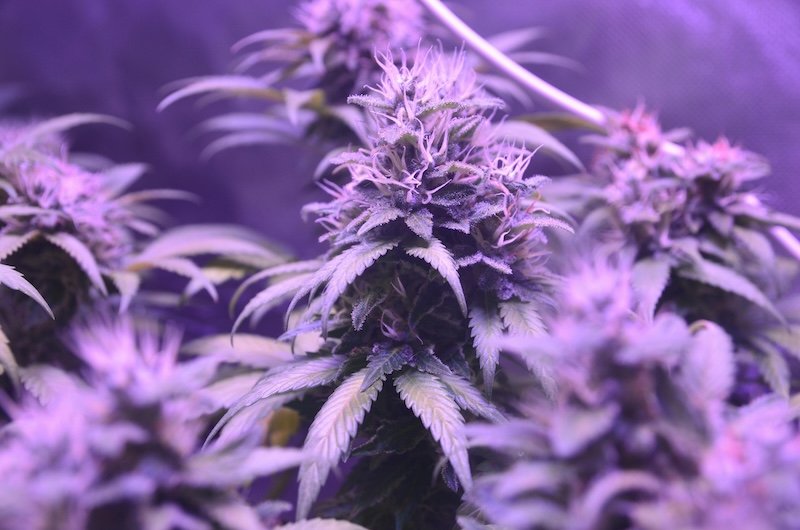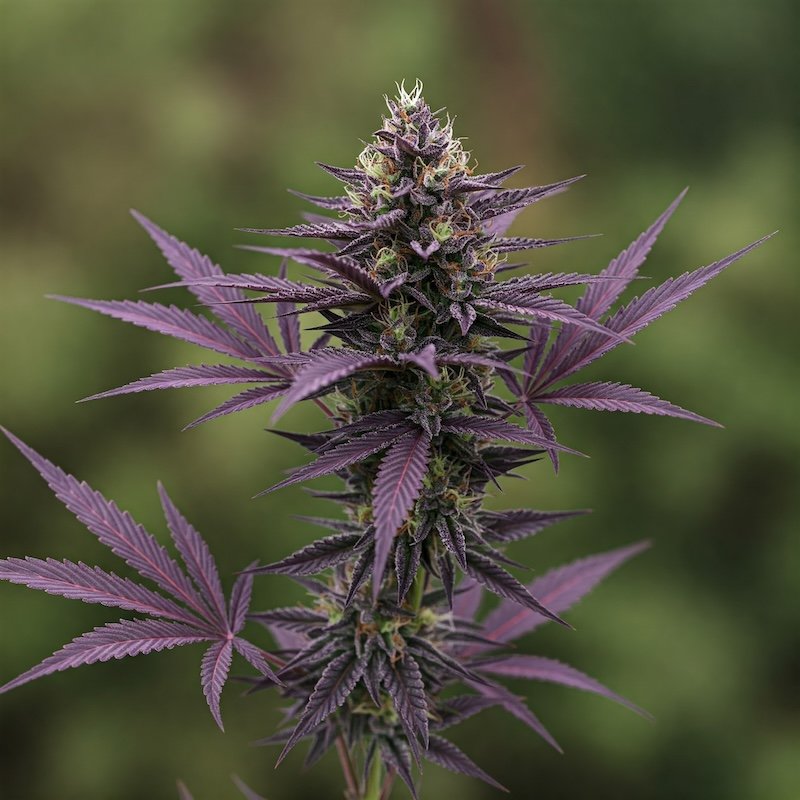Listen up, folks! Keen on growing some proper purple buds, are we? Perfect. But before we start pulling fancy tricks, we’ve gotta get the basics right. You wouldn’t build a house on a dodgy foundation, would ya? Same goes for growing purple cannabis.
In this first part, we’ll break down why some plants turn those gorgeous violet hues. We’ll talk about those little color makers—anthocyanins—and why genetics are key. Then, we’ll go over how to pick the right strains and dial in your grow space with proper temps, lighting, and pH.
Think of this as your foundation for purple perfection. Nail these bits, and you’ll be well on your way to some stunning buds. So, settle in—we’re diving deep into the science and setup of getting those lush purple colors.
The Science of Purple:
Right, so to get why your buds go all purple, we’ve gotta chat about these little fellas called anthocyanins. They’re basically the plant’s natural pigments, responsible for all sorts of colors—from red and blue to, you guessed it, purple.

Think of anthocyanins like color molecules that pop up under certain conditions, like cooler temps or high light intensity. When there’s a high concentration of them, the plant starts flaunting those purple hues.
Now, here’s the kicker—not all cannabis strains have what it takes to go purple. It’s all in the genetics. Some strains are born with the ability to produce anthocyanins, while others won’t show a hint of color, no matter what you do.
And don’t fall for the myths—purple buds don’t automatically mean stronger potency or better flavor. It’s mostly about aesthetics, like a sports car with a flashy paint job. Looks great, but it doesn’t change what’s under the hood.
Strain Selection for Purple Hues:
If you want purple buds, you’ve gotta start with the right genetics. You can’t just expect any old strain to turn purple—it’s about choosing ones bred for that violet vibe.
Some of the classics include Granddaddy Purple, Purple Kush, and Purple Punch. These strains are known for their consistent purple hues and are a great starting point for beginners. They’ve got the genes for it—proper purple lineage.
But not all purple strains are the same. Some will go purple no matter what, while others need specific conditions, like cooler temps or particular light cycles. They’re a bit fussier.
So, do your homework. Check strain descriptions, read what other growers say, and don’t be shy about asking experienced growers for tips. And remember, even with the right genetics, you still need the right environment to bring out those purple hues. Genetics are just step one.
Environmental Factors:
Temperature:
Now, let’s talk about environment. You’ve got the right genetics, but you need the right conditions to bring out those purple hues. Temperature’s a big one.

Cooler night temps help enhance purple coloration. It’s the plant’s way of saying, “Alright, time to show off a bit!” Why? Because when the temperature drops, the plant slows down chlorophyll production. Less green pigment means anthocyanins have their time to shine.
Think of it like autumn leaves—same deal. When the temps drop, the green fades, and the vibrant reds, oranges, and purples take over.
For best results, aim for nighttime temperatures around 15-20°C (59-68°F) during flowering. But don’t overdo it—you’re coaxing out color, not giving your plants frostbite. Start lowering temps gradually in the final weeks of flowering for the best effect.
Lighting:
Next up—lighting. It’s not just about how much light your plants get, but what kind.
Certain spectrums, especially UV light, can encourage anthocyanin production. It’s the same UV that gives you a tan. Some growers use supplemental UV-B light in the final weeks of flowering to boost purple hues. It’s like turning up the contrast on a photo—colors get more intense.
But easy does it—too much UV can stress your plants. If you wanna experiment, start with a low-intensity UV-B light, placed 12-18 inches from the canopy, for 15-30 minutes a day in the last couple of weeks of flowering. Think of it like adding spice to a dish—you can always add more, but you can’t take it out.
And don’t forget, overall light intensity matters too. Strong grow lights encourage purple coloration—it’s the plant’s way of flexing its colors. Just don’t overdo it, or you’ll stress your plants. It’s all about balance.
pH:
Now, pH—proper important, this one. It controls what nutrients your plants can actually use. If your pH is off, even a little, your plants might struggle to absorb the good stuff they need to turn purple.
For soil, aim for a slightly acidic range of 6.0-6.5. If you’re running hydro, keep it between 5.5-6.0.
But here’s the thing—it’s not just about hitting the right numbers. You’ve gotta keep it steady. Big pH swings stress your plants, and that can mess with their colors.
So, get yourself a good digital pH meter—those cheap test strips won’t cut it. Check your levels regularly and make small adjustments if needed. Treat it like seasoning your food—add a little at a time until it’s just right.
Conclusion:
Right, that’s a wrap for Part 1. We’ve covered the science behind purple buds, the importance of genetics, and how to set up your grow space for success. These are the must-haves if you want to see those lush violet hues.
We’ve learned that anthocyanins are the key players, genetics make all the difference, and environmental factors like temperature, light, and pH can make or break your color game.
So, lock in these basics, and you’ll be well on your way. But we’re not done yet—not by a long shot. In the next part, we’ll get into advanced techniques, nutrient management, stress tricks, and how to harvest and cure your buds to keep those colors popping.
Stay tuned—this is where it gets real interesting, and trust me, you won’t wanna miss it.
 AUS Stock - Local Delivery
AUS Stock - Local Delivery